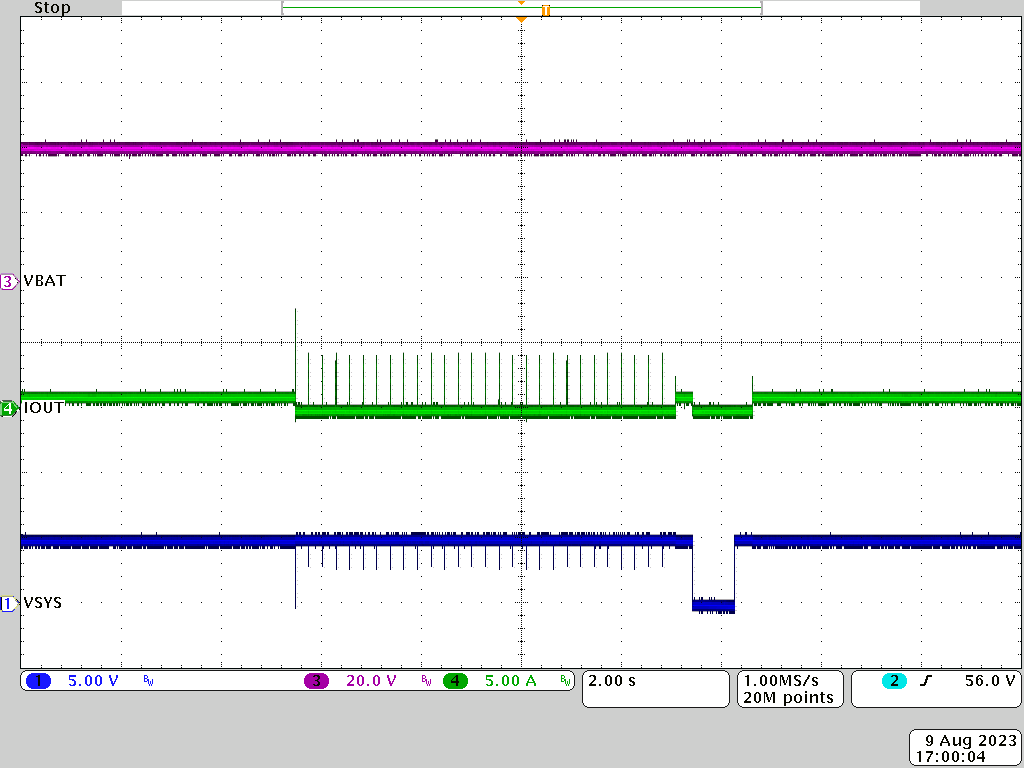TIDT349A January 2024 – December 2024
- 1
- Description
- Features
- Applications
- 1Test Prerequisites
- 2Testing and Results
-
3Waveforms
- 3.1 Charge Mode Start-Up Waveform
- 3.2 OTG Mode Start-Up Waveform
- 3.3 Voltage Transition at OTG Mode
- 3.4 Ripple and Noise at OTG Mode
- 3.5 Load Transients at OTG Mode
- 3.6 Switching Waveform
- 3.7 Overcurrent Protection at OTG Mode
- 3.8 Short-Circuit Protection at OTG Mode
- 3.9 Short-Circuit Protection at Charge Mode
- 4Trademarks
3.8 Short-Circuit Protection at OTG Mode
Short-circuit testing was performed at the USB Type-C cable end. Figure 3-29 through Figure 3-32 show the short-circuit test and recovery at 5V, 9V, 15V, and 20V individually.
 Figure 3-29 Short-Circuit Test at 5V
Figure 3-29 Short-Circuit Test at 5V Figure 3-30 Short-Circuit Test at 9V
Figure 3-30 Short-Circuit Test at 9V Figure 3-31 Short-Circuit Test at 15V
Figure 3-31 Short-Circuit Test at 15V Figure 3-32 Short-Circuit Test at 20V
Figure 3-32 Short-Circuit Test at 20V